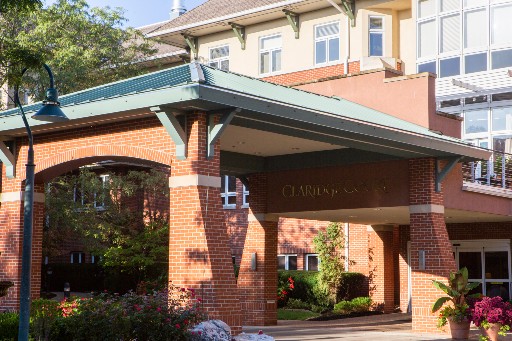Moving out of your house and into a senior living community can be a difficult decision. But just like life insurance and tax planning, deciding where to live as we age is important. And just like most things life throws at us, the more we embrace them and take them head on, the more freedom and empowerment we feel. It’s the same when planning where to live in retirement.
As you survey the landscape of senior living communities, you’ll find that most fall into one of two categories: communities that charge an entrance fee (sometimes called an entry fee or a buy-in fee) and rental retirement communities. Most communities that charge an entrance fee offer a continuum of care, but they may or may not offer Life Care. We’ll look at Life Care communities more closely in a bit, but for now, let’s look at rental retirement communities and what makes them unique.

Rental retirement communities.
A rental community usually consists of apartments designed for older adults who live independently or mostly independently without the need for assisted living or health care services. While most rental retirement communities offer a basic level of assistance, services are usually provided in the resident’s apartment by a contracted third-party provider when needed. And although more rental retirement communities are adding separate assisted living and memory care apartments to their lineup, most stop short of offering an on-site location for skilled nursing and rehabilitation.
Rental retirement communities also require no long-term financial or residential commitment. If a resident wants to leave the community, they may do so with minimal financial sacrifice. In the same manner, rental communities can ask residents to leave at any time if, for example, they can no longer afford the monthly payment or have care needs beyond what the rental community can provide.
Finally, whatever care services are available to residents will be charged at the market rate. If a resident needs more care than what’s available, they would need to move to another facility that provides that level of care. Residents of a rental retirement community are generally not guaranteed any priority access to care services beyond those provided by contracted third-party providers.

Life Care communities.
In most cases, Life Care communities offer apartment-style residences, but many feature free-standing cottages, villas and townhomes as well, which offer a wider range of floor plans and square footage. In many cases, Life Care communities also provide a wider variety of services and amenities than one might find at a rental retirement community. Plus, Life Care communities always offer independent living, as well as a full continuum of care that usually includes assisted living, memory care, skilled nursing, rehabilitation, and respite care. These higher levels of care are typically offered on-site, but in rare instances may be provided off-site in a nearby facility with which the community has a care partnership.
The biggest difference, however, is not the full continuum of care that Life Care communities offer, but the fact that it’s offered via what’s called a “Type A” contract. For residents to qualify for a Life Care contract, they commonly have to pass a health evaluation to show that they’re healthy enough to move into independent living and enjoy all the community has to offer before moving on to higher levels of care. These contracts also include provisions for receiving priority access to higher care levels and the rates at which these services are charged. In most cases, residents of Life Care communities experience little or no change to their monthly fees as their level of care increases.
Finally, as mentioned above, nearly all Life Care communities charge an entrance fee, which can vary greatly depending on the community, amenities and services it offers. This entrance fee helps lower monthly fees and offset future costs of assisted living and health care services. At many Life Care communities, like Claridge Court, a portion of your entrance fee is refundable to your estate upon death or if you choose to leave the community.

It’s all about timing.
Ideally, residents should look to move to a continuum-of-care community while they’re healthy and living independently to take advantage of everything that community has to offer. Doing so helps make the most of any entrance fee charged and allows time to build friendships with other residents, get involved in community activities, and benefit from the wellness and preventive health programs.
Plus, there’s something to be said for knowing where you’ll be living for the rest of your life and knowing you won’t have to move should your health care needs increase. Couples especially, can benefit from a continuum-of-care community. If one partner needs assistance before the other, they can enjoy being on the same campus even if they can’t live in the same residence.

Claridge Court. A premier Life Care community.
If you’re considering a Life Care community, see everything Claridge Court has to offer by filling out the brief contact form below. A representative will be in touch soon to discuss your plans and help you navigate this important decision.


